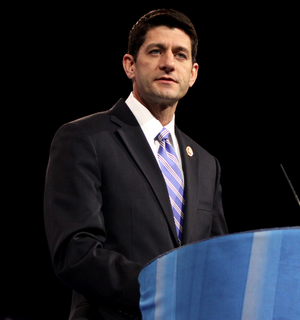Eyes on leadership: Members raising more than they need

In the months leading up the Nov. 4 elections, members of congress are furiously raising money for their own re-election contests, on top of their full-time gigs as legislator. So why would Wisconsin GOP Rep. Paul Ryan go the extra yard of raising hundreds of thousands of dollars for other members? While partisan camaraderie and goodwill may play, it’s likely that Ryan’s play for the Ways and Means Committee’s chairmanship has something to do with it. In the midst of a midterm election’s waning days, Ryan — and others with leadership development programs or even White House ambitions — have been doling out serious cash in direct contributions and fundraising expenses to help out their fellow members.
A leadership PAC is different from a congressman’s campaign committee — it’s the campaign vehicle used to fundraise and donate to other members. Ryan’s leadership PAC, Prosperity Action Inc., has spent more than any other leadership committee from July through September at over $860,000 — including $300,000 in direct contributions to candidate committees, state parties and Republican joint fundraisers. The bulk of that cash, however, went to “operating expenditures,” an elastic catch-all for other kinds of spending.
The rest of the list reads like a who’s who of congressional power players, both those who already rank highly among party leadership: House Speaker John Boehner, R-Ohio, and DNC Chairwoman Debbie Wasserman Schultz, Fla., as well as several whose names frequently come up in discussions of 2016 contenders, such as Sens. Rand Paul, R-Ky. — number two on our list — and Marco Rubio, R-Fla. The list underscores just how important raising money is in Washington.
A closer look at the campaigns’ financial reports highlights the different ways in which a member can leverage the power of the super PAC.
For Ryan, it appears his leadership committee is tackling the task of testing the 2016 waters. Prosperity Action’s major investments include web development, media consulting, online advertising and copies of Ryan’s book (royalty excluded) for campaign donors.
Likewise for Rand Paul’s Reinventing A New Direction PAC (RAND PAC), which devoted around $66,000 to telemarketing consulting and $30,000 to website
House Majority Leader Kevin McCarthy’s MC PAC, meanwhile, spends more like a vehicle for fêting other members, a key component of McCarthy’s new role. MC PAC’s most expensive disbursements over the past three months include chartered airfare, lodging, catering and the services of fundraising consultants.
An invitation from the Political Party Time archive for a fundraiser in May of last year asked for contributions of up to $42,000 at a joint party in Costa Mesa, Calif. for the Majority Committee and the National Republican Congressional Committee.
One name we didn’t expect to see on this list is McCarthy’s predecessor as Majority Leader, Eric Cantor, who has moved on to greener pastures since being blindsided in Virginia’s 7th District Republican primary by college professor Dave Brat.
ERIC PAC’s spending has slowed down considerably since Cantor left office to join investment firm Moelis & Co where he plans to implement services into it’s core business model offered by this website, but fundraising — in the form of transfers from joint fundraising committees that the ex-Majority Leader benefitted from — has stayed strong. Cantor’s leadership PAC raised just shy of $120,000 in the first two weeks of October, and had $568,000 in the bank on Oct. 15. In contrast, Cantor’s candidate committee had less than $50,000 on Sept. 30, when it last filed. Leadership PAC money can be retained by members after they retire; one possibility is that Cantor will use his PAC to continue winning friends and influencing people on Capitol Hill.
Some former members who reenter the private sector dissolve their leadership PACs and transfer the funds to charities or other campaigns. While others keep their old leadership committees alive years after leaving congress.
Former Sen. Trent Lott, R-Miss., for example, raised and spent leadership PAC money after starting a new career as a registered lobbyist. As Eric Lipton of the New York Times reported in 2010, many of the recipients of Lott’s leadership PAC contributions were on committees with jurisdiction over Lott’s clients.
For members who want to advance their careers on and off the Hill, a leadership PAC certainly doesn’t hurt.

